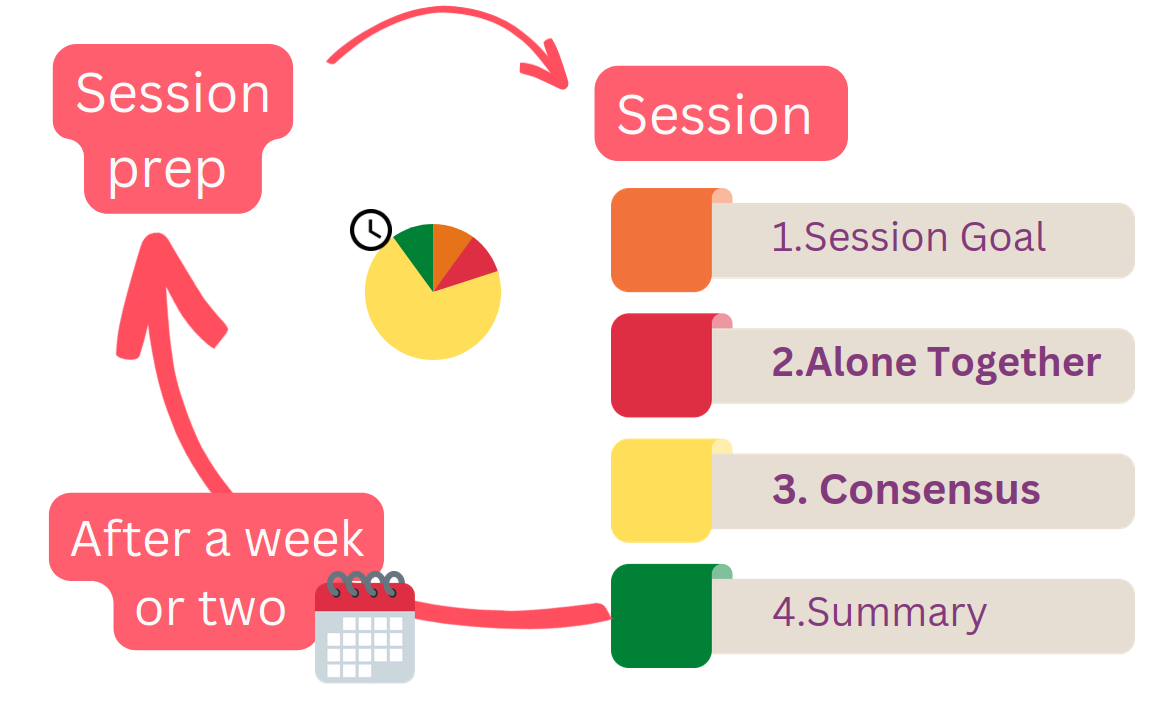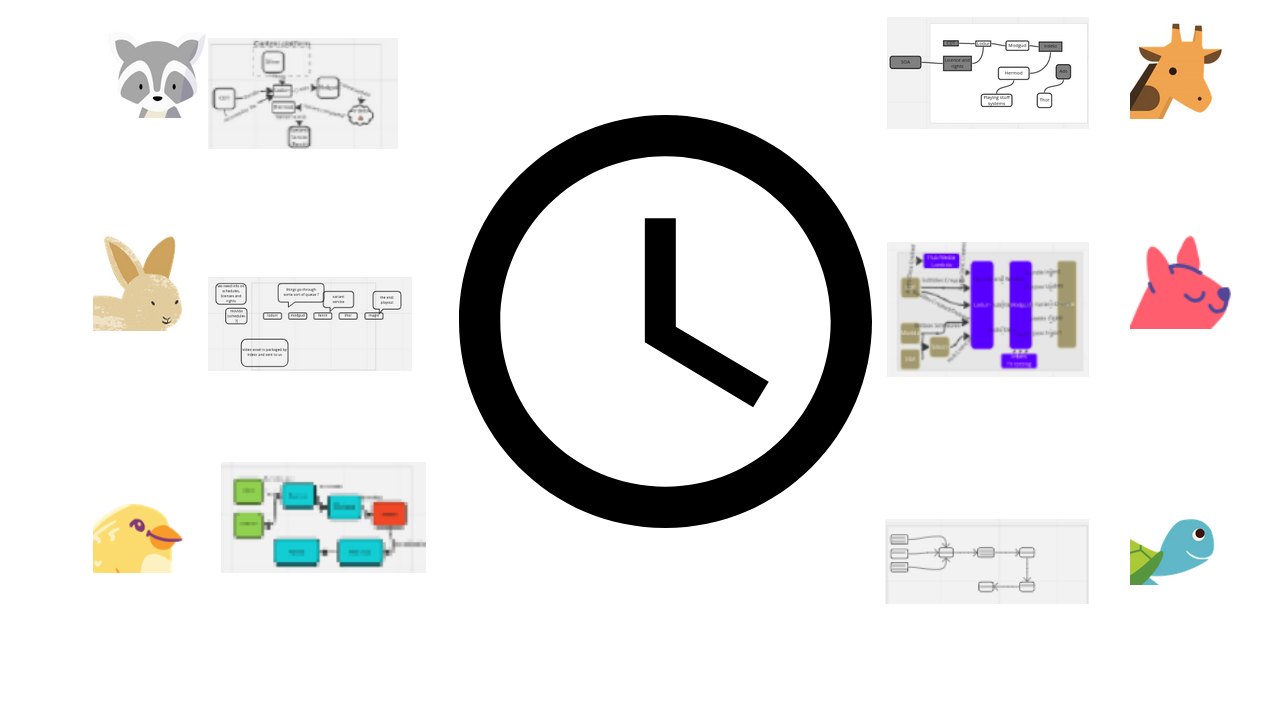How to run your first sessions

Before the session, prepare people
One of the main objectives of the Bytesize Sessions is for a team to have a homogeneous understanding of the system they work with. The right people to attend are all the people that have a high level of influence on that system.
Start with a team. Invite those that know about what needs to be done, those that build the system, and those that understand the stakeholder requirements best. If not sure, start with the people in the Stand Up. If there are more than ten people in the guest list, consider breaking the meeting into smaller groups.
The recommended modelling tool when starting is C4. If the team is not experienced with it, train them on it first. During a Bytesize Session the attendees should focus on modelling, not the modelling tool of choice.
Running a Bytesize Architecture Session
The key to a good session is ensuring everyone knows what they need to do, that they don’t feel lost. At the start of the session explain the overall format, then for each part delve into the specifics.
Goal
This section of the meeting should take about five minutes and it’s about having a Goal for this particular session. A good first session is to model the system that the team actively works on as it is right now. Bear in mind that the attendees will have a handful of minutes or less to model this. If the system you are trying to model is too big, choose a subsection to focus on.
It’s good to have a suggestion of what to model before starting a session. However the final goal should be the result of team agreement.
Before moving on to the next section, check that every attendee understands the goal.
Alone Together
This section should take ten minutes or less.
For the first part of this section set a timer for three to five minutes. During this time everyone works individually and quietly on the same modelling task. After the timer elapses, each person explains their own diagram to the rest of the group.
This modus operandi might be atypical, here are few reasons why it’s useful:
- The quiet time allows people to work and think individually, without other people’s voices. It strengthens their focus on the aspect of the system the session focuses on
- Higher engagement levels on the topic for the rest of the session
- Helps participants self evaluate their perceived understanding of the system, highlighting areas where they can focus on learning more
- Understand how other people in the team think of the systems

Consensus
The longer part of the session, lasting between twenty to thirty minutes.
Consensus is about coming together to create one diagram from scratch with the combined knowledge of the team.
It’s normal for things to get a little hectic. In order to achieve the goal, designate a scribe that can rotate every meeting. The scribe will be drawing the diagram from scratch with everyone’s help.
The host plays a key role during this time when and if the conversation starts deviating from the goal of the session.
Summary
The last few minutes of the meeting.
Some retrospection on the workshop. This part of the session is about reviewing what was achieved and what needs to be done next. Set a timer for one minute, have people write about what they learned and any other feedback in sticky notes.
Optional bonus task: ask for a volunteer to create a clean copy of the diagram, and to bring whatever outstanding questions remain to the next session.
Do it again!
Repetition is a great way to learn, it is ideal to do another session in a week or two. It shouldn’t be so often that it overwhelms people and it should be often enough to keep familiarity with things discussed.
Bytesize Sessions can be used for continuous learning. It’s also possible to set long running goals, for example Bytesize Architecture Sessions can be used to create a Target Architecture or help enable inter-team communication for a complicated piece of work.